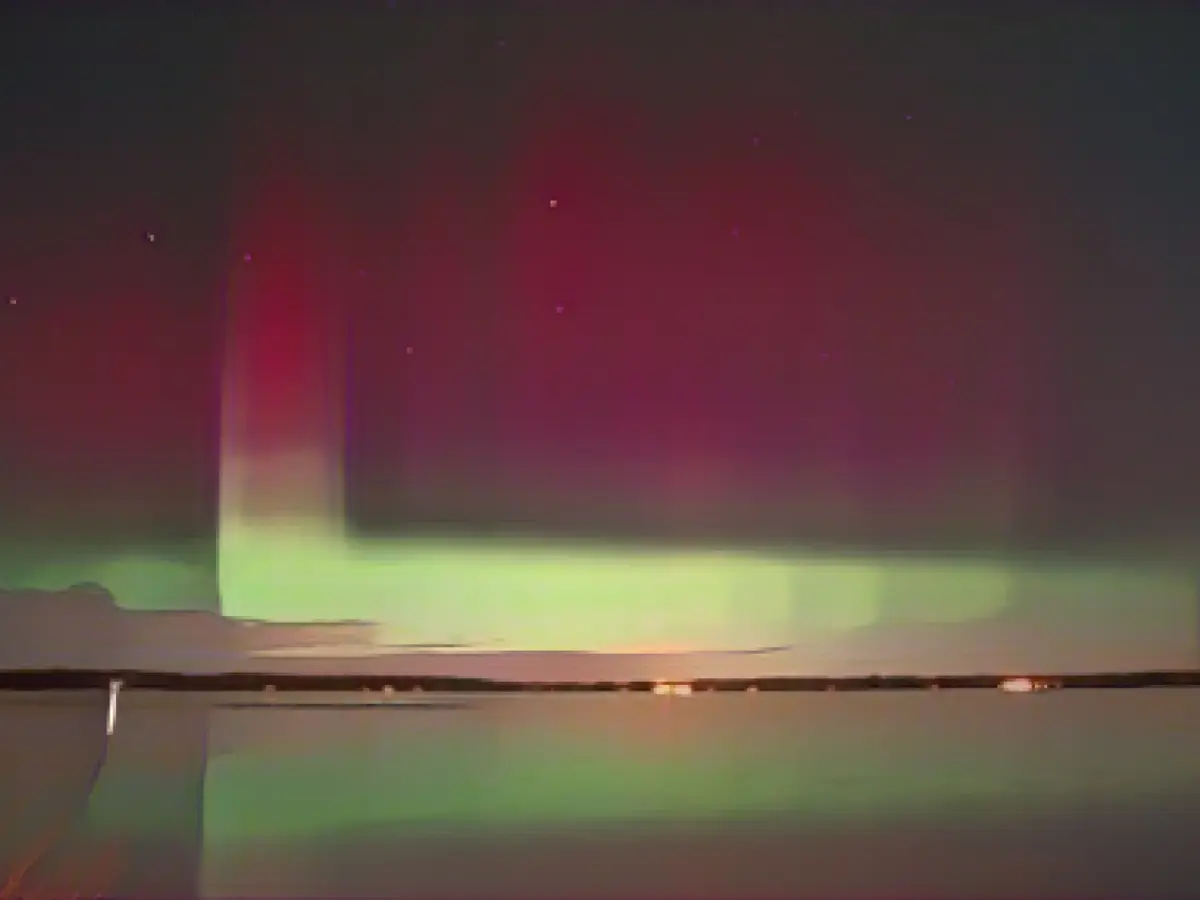Astronomy - Expert: Good chances of seeing auroras from Friday evening
According to aurora expert Michael Passarge from the Bad Salzschlirf Solar Observatory, there are currently good prospects of being able to see the celestial phenomenon in Hesse from Friday evening. The prerequisite is, of course, that no clouds obscure the view of the evening sky, Passarge said on Thursday. On Tuesday, there was a strong eruption on the side facing the earth and near the center of the sun. The resulting plasma cloud is moving towards the Earth at high speed. This and other factors suggest that "a new auroral phenomenon" could also occur in mid-latitudes in the evening hours this Friday (December 1).
Whether this will actually happen remains to be seen, said Passarge, who regularly speaks on the subject in specialist lectures in East Hesse. However, he sees a good chance that the auroras in Germany can also be seen as far south as Frankfurt or possibly even beyond, he told the German Press Agency.
The Association of Star Friends in Heppenheim, Hesse (Bergstrasse district), believes that auroras are also possible in mid-latitudes such as Hesse this Friday. The largest part of the plasma cloud is expected to arrive on Earth on Friday morning after the latest solar flare, said Carolin Liefke from the Association of Star Friends. The arrival of plasma particles is also expected to continue after that. However, it is currently difficult to predict how strong this plasma cloud will actually be. And, of course, it has to be dark and clear to see auroras.
Auroras are caused by solar flares, which result in a so-called coronal ejection of mass towards the earth, consisting of electrons, protons and atomic nuclei. Because components of the plasma are electrically charged, they interact with the Earth's magnetic field and virtually compress it. Magnetic short circuits in the tail of the Earth's magnetic field generate particle currents in the polar regions, which excite the air particles to glow, making them visible as the green or red aurora borealis.
Solar Observatory Bad Salzschlirf Association of Star Friends Heppenheim
Lesen Sie auch:
- Large contingent at school: Armed pupil overpowered
- Signa subsidiary SportScheck files for insolvency
- Bus leaves the road: Two passengers in hospital
- 1. FC Magdeburg and women's regional league team merge
The Bad Salzschlirf Solar Observatory, located in Germany, is led by aurora expert Michael Passarge, who predicts good chances of seeing auroras in Hesse from Friday evening. The Association of Star Friends in Heppenheim, a mid-latitude region in Hesse, shares this optimism, as the largest part of the plasma cloud is expected to reach Earth on Friday morning. With clear skies, the polar light, such as the aurora borealis, could be visible even as far south as Frankfurt.
Source: www.stern.de








